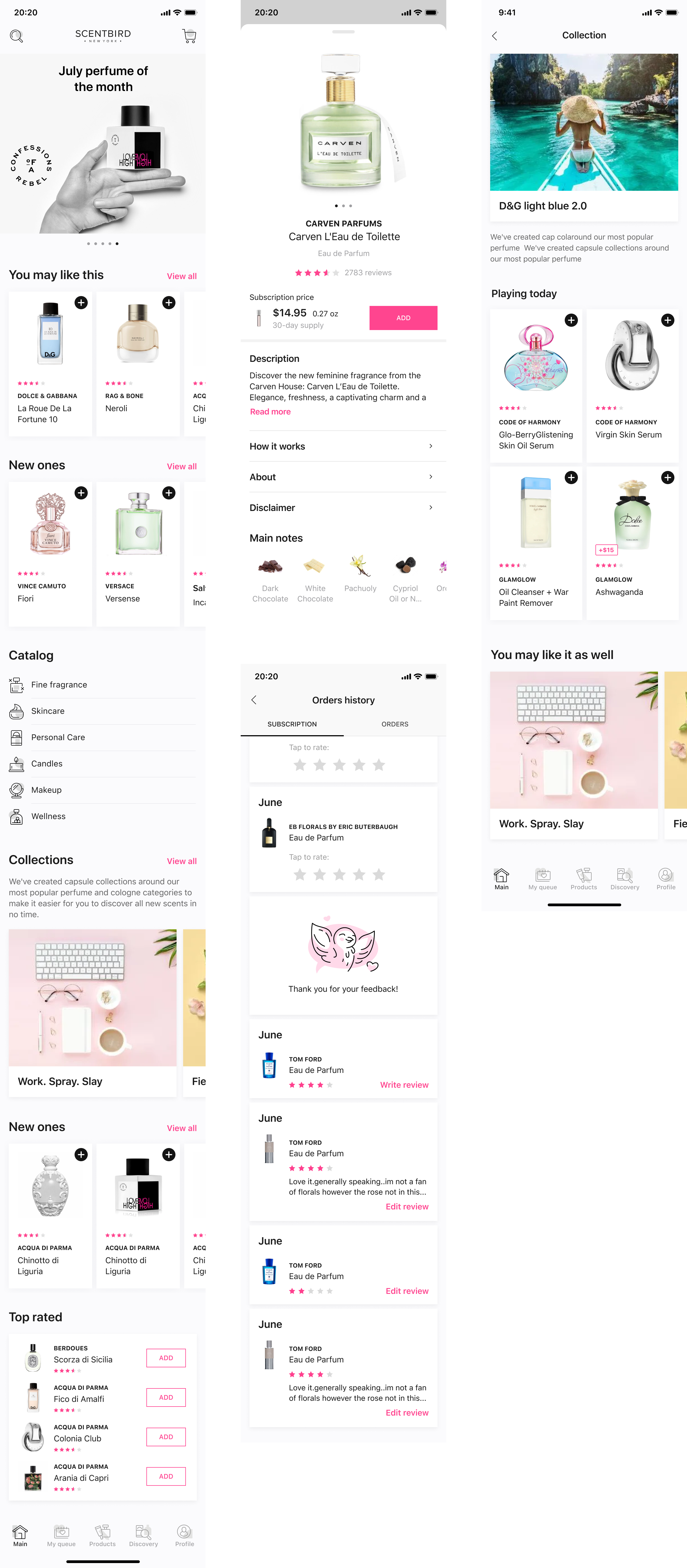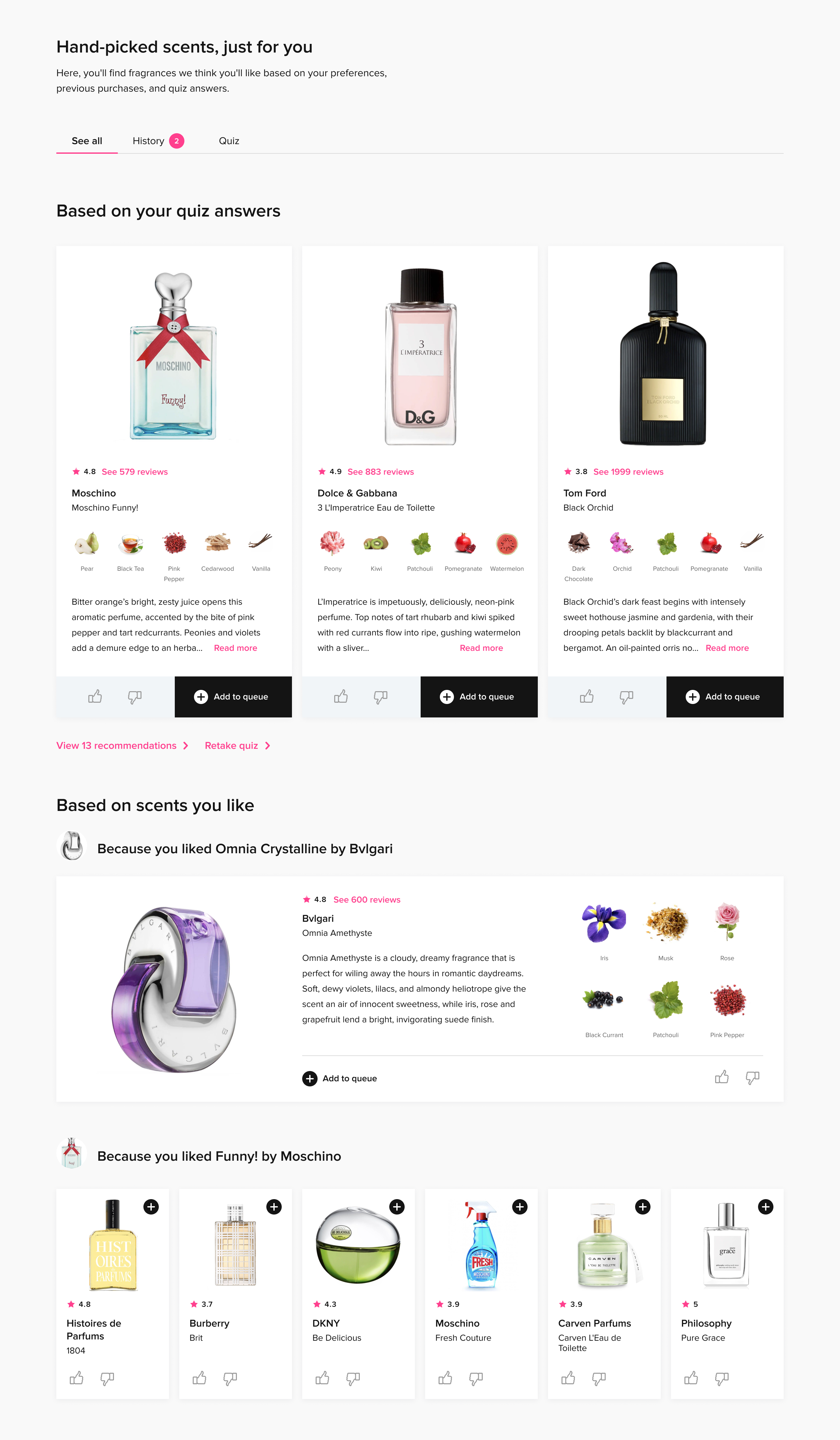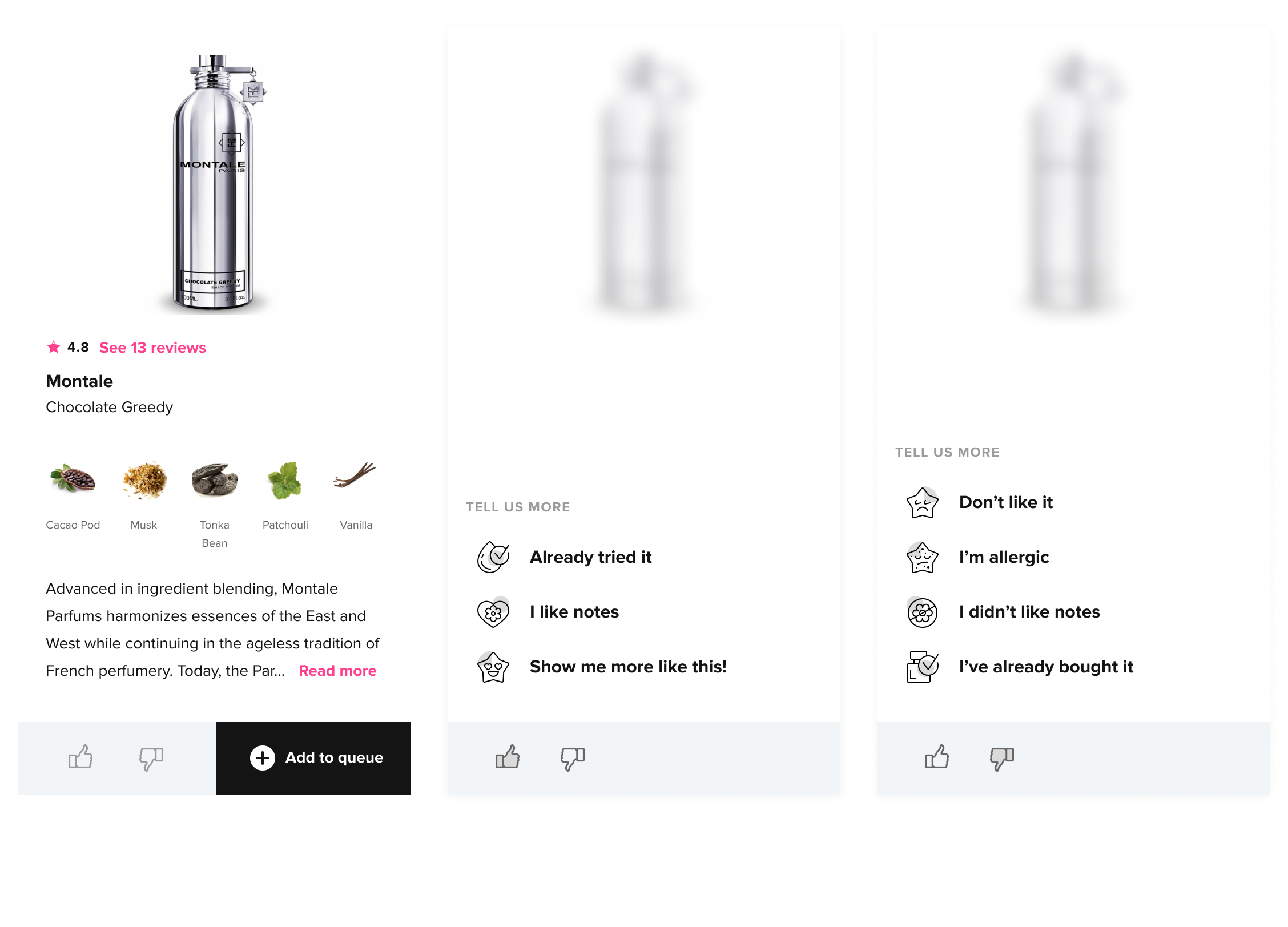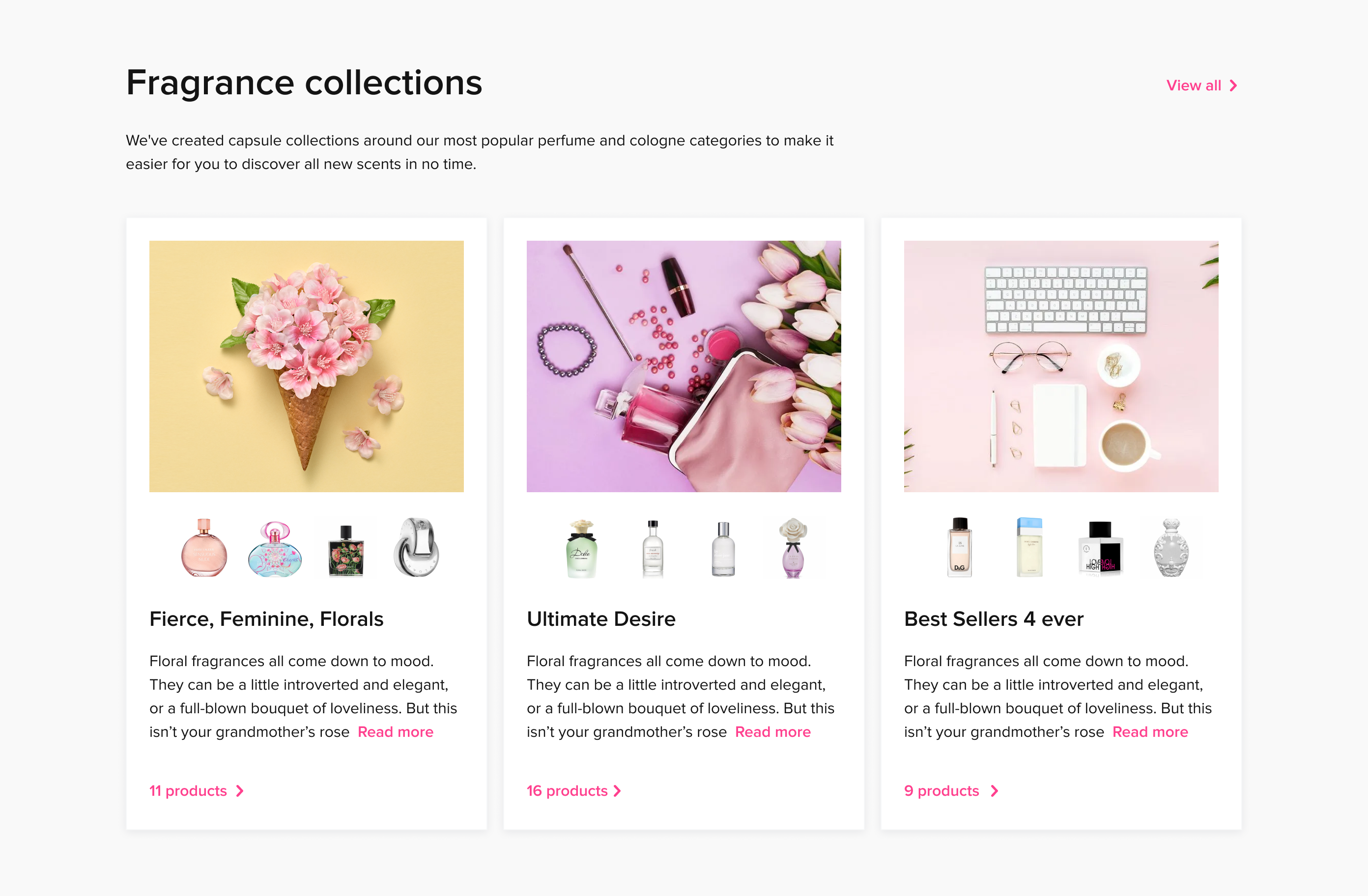A noticeable percentage of new users unsubscribed because some famous brands were unavailable.
Scentbird
- Fragrance subscription
- Senior product manager
- New York, 2018–2020
Projects:
As a senior product manager, I focused on user retention.
I launched the mobile app on iOS and Android, developed an ML-based fragrance recommender, and improved information architecture to aid users in selecting fragrances, impacting retention and monetization.
I joined the company with an existing product, and most design decisions were affected by it, so keep that in mind. However, it was a great experience and an exciting challenge.
How would you pick a fragrance online!?
My role involved user research, task prioritization (backlog), feature design, and experimentation.
Mobile app

When I joined Scentbird, I recognized the need for a native mobile app to enhance user experience tailored to device form factors and to redesign specific user stories from scratch.
I oversaw the app‘s design, prepared it for launch, and recruited initial users for testing.
Our first iteration, aimed at existing users, improved the shipping queue experience, receiving a very positive initial response.
A few months post-launch, a new team took over the app‘s maintenance, allowing me to concentrate on developing the fragrance recommender.
Modular information architecture and content strategy

The Main page for authorized users is a pivotal element of the app. I designed a modular approach, where sections are automatically rearranged, hidden, or shown to address the user‘s goals and help them get the most out of the service.
We introduced new sections such as upcoming shipments (which reduced the churn rate by approximately 1,800 users monthly), popular notes (quickly becoming one of the most visited sections), plan upgrades, and a consolidated promotions section, which improved monetization and cleaned up the UI.
Since about 90% of our users accessed the app via mobile devices, we prioritized the mobile experience. This effort was part of a broader mobile navigation redesign.
Fragrance recommender. How to improve user retenton despite limited product range.
My team couldn’t affect the catalog, only the digital storefront.
Brand deals and contracts were managed by another team that did their best to broaden the assortment.
200+ fragrances is a lot to explore. My team developed a Netflix-style recommendations algorithm (based on real-life experiences of lookalike users) and the first version of the recommendations interface.
I spanned data acquisition for model training, directed research and selection of the modeling approach, and contributed to the design of the user interface for the recommendations section.
The project took 6 months, covering data gathering, model training, UI design, and launch.
The team included a data scientist, backend engineer, frontend engineer, QA engineer, product manager (myself), and a UI designer.
The fragrance recommender section

By leveraging extensive user preferences and a vast database of ratings, coupled with advanced machine learning techniques, it provides highly accurate fragrance recommendations.
I contributed by working on the UI, processing data, and training the model.
Large product card

Our aim was to assist users in making more informed choices when selecting fragrances to try.
After interviewing power users, I designed large product cards to reflect their usage habits and instantly display all essential product information.
This controversial decision led to a 50% rise in the number of products that new users added for trial, consequently boosting their retention and lifetime value.
Collections.

The number of products users planned to try correlated with retention and LTV, and I was looking for a way to encourage users to try more fragrances. I envisioned collections as a means for users to add multiple items with one click.
Within a few weeks, we launched 12 themed collections. Users began adding products from these collections, realizing an idea was behind each one.
A few months after the launch, Collections became one of the top-3 sources for people adding more products to their queue (which was our goal).